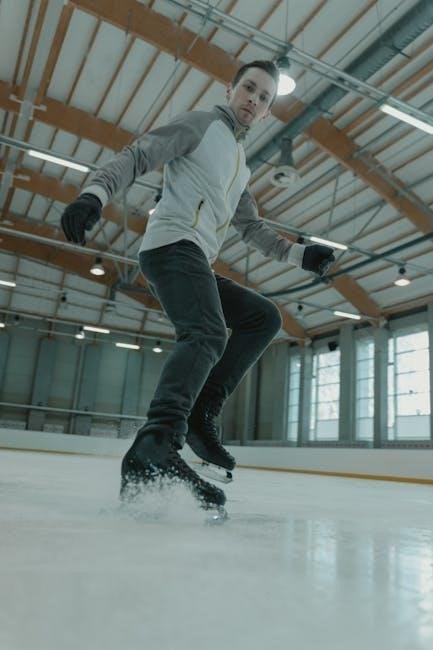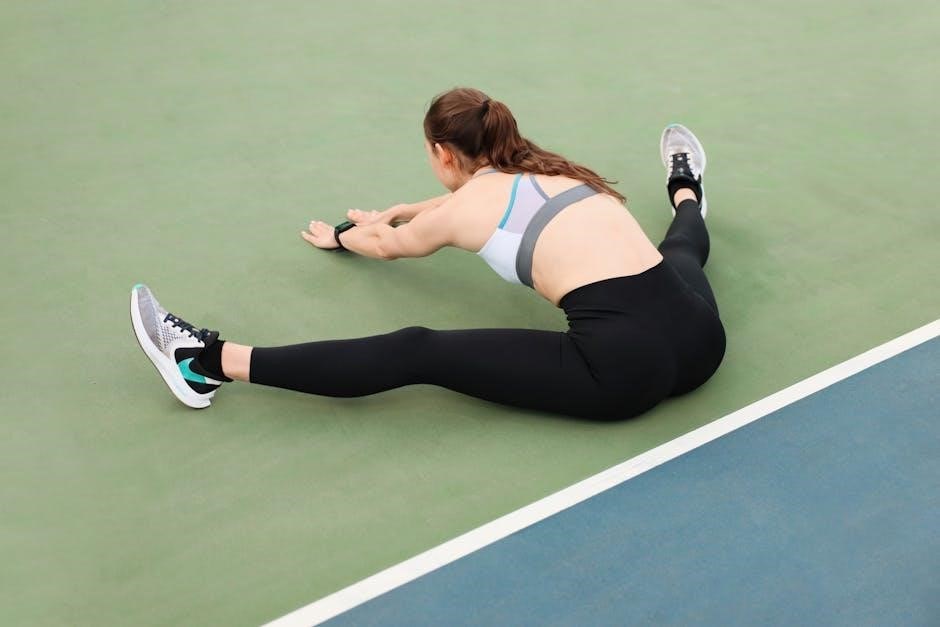Understanding Posterior Tibial Tendon Dysfunction
Posterior tibial tendon dysfunction (PTTD) is a common condition involving the tendon supporting the foot’s arch, often leading to pain and instability during movement.
Definition and Overview
Posterior tibial tendon dysfunction (PTTD) is a condition where the posterior tibial tendon, a key stabilizer of the foot’s arch, becomes inflamed or damaged. This tendon, originating from the tibialis posterior muscle, runs along the inner side of the ankle and supports the foot during walking and standing. PTTD often leads to pain, instability, and difficulty bearing weight, particularly on the inner ankle and foot arch. It is commonly associated with adult acquired flatfoot deformity, where the arch collapses. Early stages may involve mild pain and swelling, while advanced stages can result in significant disability. Accurate diagnosis and timely intervention are crucial to prevent progression and restore function.
Symptoms and Stages of Dysfunction
Posterior tibial tendon dysfunction (PTTD) typically presents with pain along the inner side of the ankle and foot arch, swelling, and difficulty walking. Symptoms worsen with activity. In early stages, pain may be mild and intermittent, while advanced stages can lead to a collapsed arch and significant disability. The condition progresses through stages: Stage I involves pain and swelling without arch collapse, Stage II shows partial arch collapse with noticeable flatfoot, and Stage III is characterized by a rigid flatfoot deformity. Early intervention is critical to prevent progression and restore function. Accurate diagnosis and tailored treatment plans are essential for managing symptoms effectively.

Nonoperative Management of Posterior Tibial Tendon Dysfunction

Nonoperative management focuses on reducing pain and restoring function through orthoses, physical therapy, and activity modification. Exercise programs and supportive devices are central to treatment plans.
Orthoses and Their Role
Orthoses play a critical role in managing posterior tibial tendon dysfunction by providing structural support to the foot and ankle. These custom or prefabricated devices help reduce stress on the tendon, stabilize the foot arch, and improve alignment during walking or standing. Orthoses are designed to limit excessive pronation, a common issue in PTTD, and redistribute pressure more evenly across the foot. By immobilizing or supporting the foot, orthoses can alleviate pain and prevent further tendon damage. They are often used in conjunction with exercise programs to enhance recovery and restore functional mobility. Orthotic devices are a cornerstone of nonoperative treatment, offering immediate relief and long-term support for patients with PTTD.
Exercise Programs as a Core Treatment
Exercise programs are essential in treating posterior tibial tendon dysfunction, focusing on strengthening the tibialis posterior muscle and improving ankle stability. These programs often include calf raises, heel lifts, and resistance band exercises to enhance tendon strength and flexibility. Stretching exercises, such as Achilles tendon stretches, are also incorporated to reduce tightness and improve mobility. Additionally, balance and proprioceptive training help restore foot function and prevent further injury. Exercises are typically performed in structured sets and repetitions, tailored to the patient’s pain tolerance and progression. Consistency in these programs is key to achieving long-term recovery and preventing recurrence of symptoms, making them a vital component of nonoperative management for PTTD.

Key Exercises for Posterior Tibial Tendon Dysfunction
Calf raises, stretching, and resistance band exercises are essential for strengthening the tibialis posterior tendon, improving flexibility, and restoring foot stability and function.
Calf Raises and Strengthening Exercises
Calf raises are a cornerstone exercise for addressing posterior tibial tendon dysfunction, targeting the tibialis posterior muscle. To perform, stand with feet hip-width apart, then lift the heels off the ground, raising the arches. Hold for 5-10 seconds, gradually increasing duration. Single-leg calf raises enhance balance and isolate the muscle further. Strengthening exercises should be done 3 sets daily, progressing to weighted calf raises as strength improves. These exercises help restore tendon function, improve arch support, and reduce pain during walking or standing. Consistency is key to achieving long-term benefits and preventing further dysfunction.
Stretching and Mobility Exercises
Stretching is essential for improving flexibility and reducing stiffness in the posterior tibial tendon and surrounding muscles. A common exercise involves sitting with the affected leg extended and looping a towel around the foot. Gently pull the towel to feel a stretch in the calf, holding for 20-30 seconds. Repeat 3-5 times. Passive stretching, where the foot is manually dorsiflexed, can also be beneficial. Additionally, stretching the Achilles tendon and plantar fascia helps alleviate tension on the posterior tibial tendon. These exercises should be performed daily, ideally before and after activity, to enhance mobility and reduce discomfort. Consistent stretching can significantly improve functional ability and support overall recovery.
Resistance Band Exercises for Tibialis Posterior
Resistance band exercises are effective for strengthening the tibialis posterior muscle and improving foot stability. Anchor a Theraband or similar band to a stable object. Loop the band around the foot, focusing on inversion (turning the foot inward) and eversion (turning the foot outward) movements. Perform 3 sets of 10-15 repetitions. This exercise enhances muscle activation and promotes proper arch support. Gradually increase resistance as strength improves. Consistency with these exercises helps restore functional strength and reduce symptoms of posterior tibial tendon dysfunction. Proper form is crucial to target the correct muscles and avoid further strain.

Additional Conservative Treatment Options
Orthotics and supportive footwear provide arch support, reducing strain. Ice therapy alleviates pain and inflammation, while activity modification prevents further injury, promoting healing and stability.
Orthotics and Supportive Footwear

Orthotics and supportive footwear are essential in managing posterior tibial tendon dysfunction. Custom orthotics can redistribute pressure and provide arch support, reducing strain on the tendon. Shoes with sturdy soles and medial arch support are recommended to stabilize the foot during walking or standing. Avoiding high heels and flip-flops is crucial, as they can exacerbate symptoms. Proper footwear helps maintain foot alignment, preventing further tendon stress. Additionally, orthotic devices may include arch supports or ankle braces to enhance stability. Wearing supportive footwear consistently can significantly improve comfort and reduce pain, especially during daily activities. Consulting a podiatrist or orthotist for tailored recommendations is highly advised to address specific foot mechanics and promote healing. This approach complements exercise programs and other conservative treatments effectively.

Ice Therapy and Pain Management

Ice therapy is a cornerstone in managing posterior tibial tendon dysfunction, helping reduce swelling and alleviate pain. Apply an ice pack to the affected area for 15-20 minutes, several times daily, during the initial stages. Avoid direct ice contact on the skin to prevent tissue damage. Over-the-counter anti-inflammatory medications, such as ibuprofen, can also be used to reduce pain and inflammation. For severe cases, prescribed pain relief medications may be necessary. It’s important to avoid activities that exacerbate symptoms, such as high-impact exercises, to allow the tendon to heal. Combining ice therapy with rest and activity modification supports the recovery process and helps manage discomfort effectively.

When to Seek Medical Attention
Seek medical attention if experiencing severe pain, significant swelling, or inability to bear weight. Consult a doctor if symptoms persist despite rest and conservative treatments.
Indications for Surgical Intervention
Surgery is typically considered for advanced stages of posterior tibial tendon dysfunction, particularly when nonoperative treatments fail. Indications include persistent pain, significant foot deformity, or inability to perform daily activities. Patients with Stage II or III dysfunction who do not respond to orthoses, exercises, or physical therapy may benefit from surgical intervention. Procedures such as tendon transfers, osteotomies, or tendon reconstruction are common. Surgery is also recommended for those with chronic instability or progressive flatfoot deformity. The decision to operate is made after thorough evaluation of the patient’s condition, lifestyle, and treatment goals. Surgical options aim to restore foot alignment, alleviate pain, and improve functional mobility.
